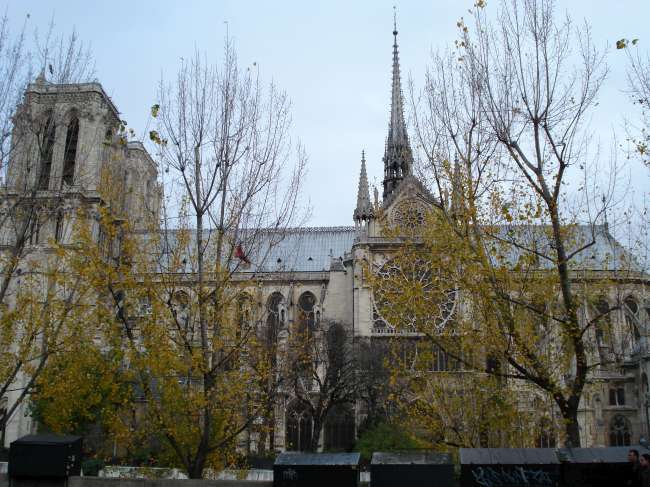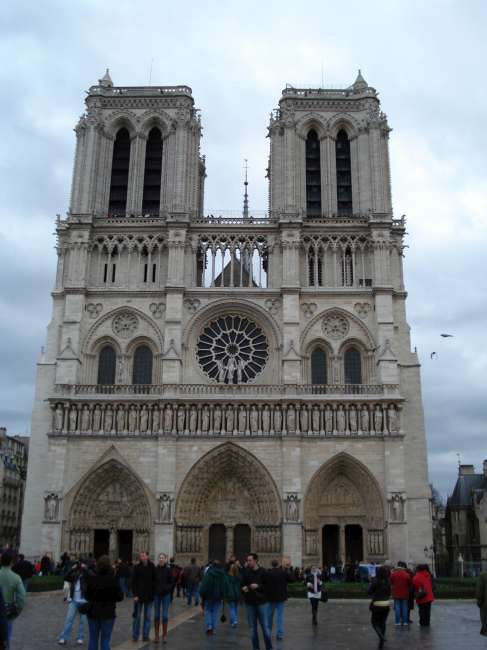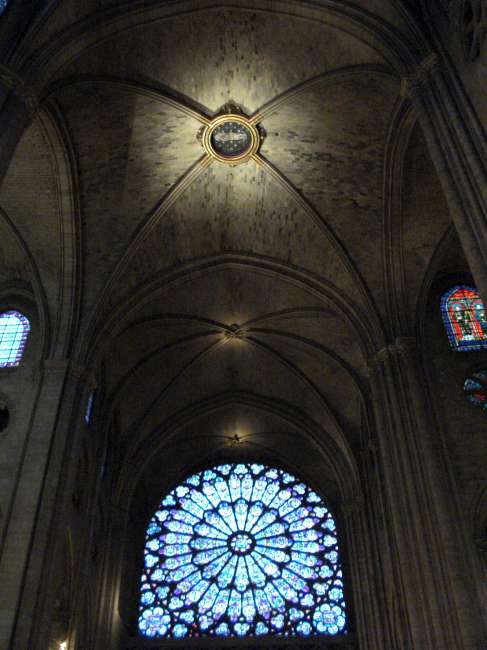
World Monument Photography
April 25, 2024
The Notre Dame Cathedral is one of the main attractions in Paris today. The first cornerstone of the cathedral was laid down in 1163 and the cathedral was completed in 1245. It had become one of the central cathedrals in Roman Catholicism and a symbol of its power in the country. This symbol was shaken violently during the first years of the French Revolution. In this article, we explore how the Notre Dame Cathedral briefly became the center of Atheism during the late 18th century.

France before the French Revolution, was a firmly Catholic nation. The Catholic Church was the largest landowner. This provided the Church with enormous revenues in the form of tenants living on the land and the collection of taxes (a tithe, which was a compulsory 10 percent tax imposed on all faithful Catholics). The Church was the only institution in the nation that kept birth, death and marriage certificates making it the only institution that kept any form of census in the nation. The Church was also the only institution that provided both primary and secondary education as well as medical services in the form of hospitals. In effect, the Church performed essentially all social services required for most of the rural population in France, which at the time amounted to a great majority of the total population.
With great wealth, came great corruption. People understood that the power of the Church came from its taxing power. They understood that most of the clergy is corrupt and content to keep people where they are: peasants in effective servitude of its landlords, the Church. By the end of the 18th century, people have become religiously apathetic and come to hate and ridicule the monarchy. This hate finally erupted in 1789 in the form of the French Revolution, where the monarchy was overthrown and the taxing power of the Church was revoked.
As an added measure against the church, an atheistic belief was established in France in opposition to the Roman Catholic Church. It became a doctrine of the official government policy in 1792 when the First French Republic was declared and was called the Cult of Reason. It was a form of rebellion against the clerical hierarchy that gripped the French society for centuries. The declared goal of the cult was the perfection of mankind solely through the human capacity of reason. Being an atheist cult, worship was given to the abstract ideal of Reason, as opposed to God.

Adherents of this new faith included Joseph Fouche, who was a military commander who enforced this new faith in a number of provinces across France. His methods of enforcing this new faith included the forced removal of all crosses and statues from graveyards. All church owned land was confiscated and return to the Republic. All church crosses and bells were destroyed. He instituted new festivities that would replace Christian ones. Priests would no longer swear oath to the Catholic Church, instead, they would swear oath to the new faith. Those who refused would face deportation, imprisonment or death. Death would sometimes come at the hands of angry mobs who oppose the Church. In summary, the Cult of Reason caused the wholesale de-christianization of France and occurred in a period of less than two years.
Although not specifically instituted by the cult, France adopted a new calendar that was based purely on the decimal system. Year 1 of the new calendar corresponded to 1792. The year consisted of 12 months that were divided into three 10 day weeks. One purpose of this calendar was to erase any possibility of people remembering when to go to mass on Sunday, a day not defined in the new calendar. All references to the Sabbath, Saints` days or any reference to the Church were outlawed. The new calendar was in use for 12 years.
Churches throughout France, including the Notre Dame Cathedral, were transformed into Temples of Reason. Christian statues and paintings were removed from Notre Dame Cathedral and sold off to finance the revolution. The statue of the Virgin Mary was removed and replaced with Lady Liberty, also called the Goddess Reason in November 1793. The statues of the biblical kings of Judah (erroneously thought to be French kings) were beheaded. Many heads were found in 1977 during an excavation nearby and are now on display at the Museum of Cluny. The sign above the cathedral doors read To Philosophy. The Notre Dame Cathedral bells, however, somehow avoided destruction and survived this period of religious purge.

By 1794, Robespierre, the effective dictator of France, introduced a new cult that quickly replaced the Cult of Reason. The complete rejection of any deity by the Cult of Reason abhorred Robespierre. As a middle ground, he proposed the Cult of the Supreme Being in 1794. The principles of this faith were the belief in the existence of God and the immortality of the human soul. Reason was viewed as a means to an end, as opposed to an end on itself, as in the Cult of Reason. The objective, or end, is virtue, which can only be attained by liberty and democracy. The belief in a diety, it was argued, was required to represent a higher moral code. New festivities were announced for this new religion that used France`s new calendar system. With the downfall and death of Robespierre later in 1794, his new cult lost its influence and was officially banned by Napoleon Bonaparte eight years later.
This period of dechristianization of France continued until Concordat of 1801, which was signed by Napoleon Bonaparte and Pope Pius VII. This law had allowed Roman Catholicism to be practiced in France, but all former clerical land was to be owned by the French State and all Bishops would be appointed by the State and swear allegiance only to the State. With this decree, the Notre Dame Cathedral, which became a warehouse for the storage of food, was renovated and religious relics were restored to the Cathedral. Napoleon was crowned as Emperor of France in 1804 in the Notre Dame Cathedral. Although the coronation ceremony was in the presence of the Pope, Napoleon refused to be crowned by the Pope and, instead, crowned himself!
Today, the Notre Dame Cathedral stands as a testament of a grand Gothic style cathedral in the service of the Roman Catholic church and is one of the main attractions in Paris. Its large organ and endless line of religious statues and carvings hide its heretical past.